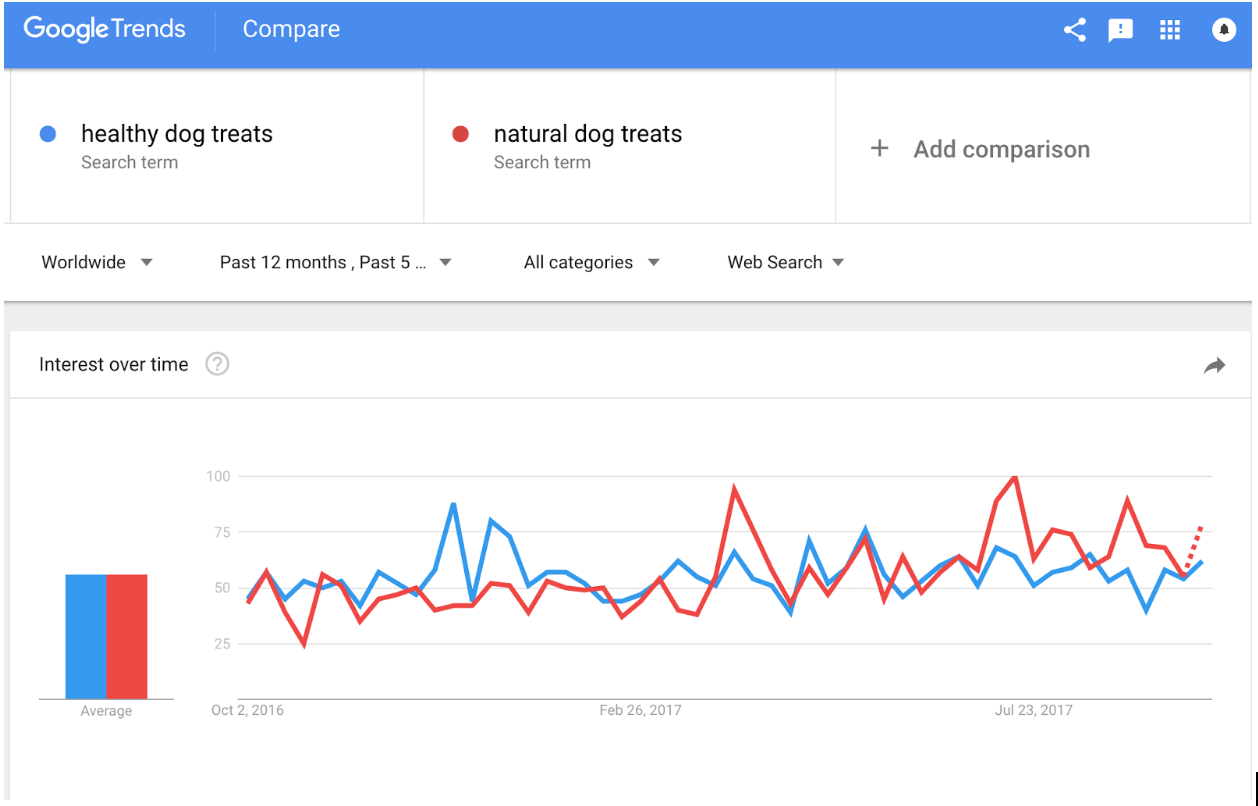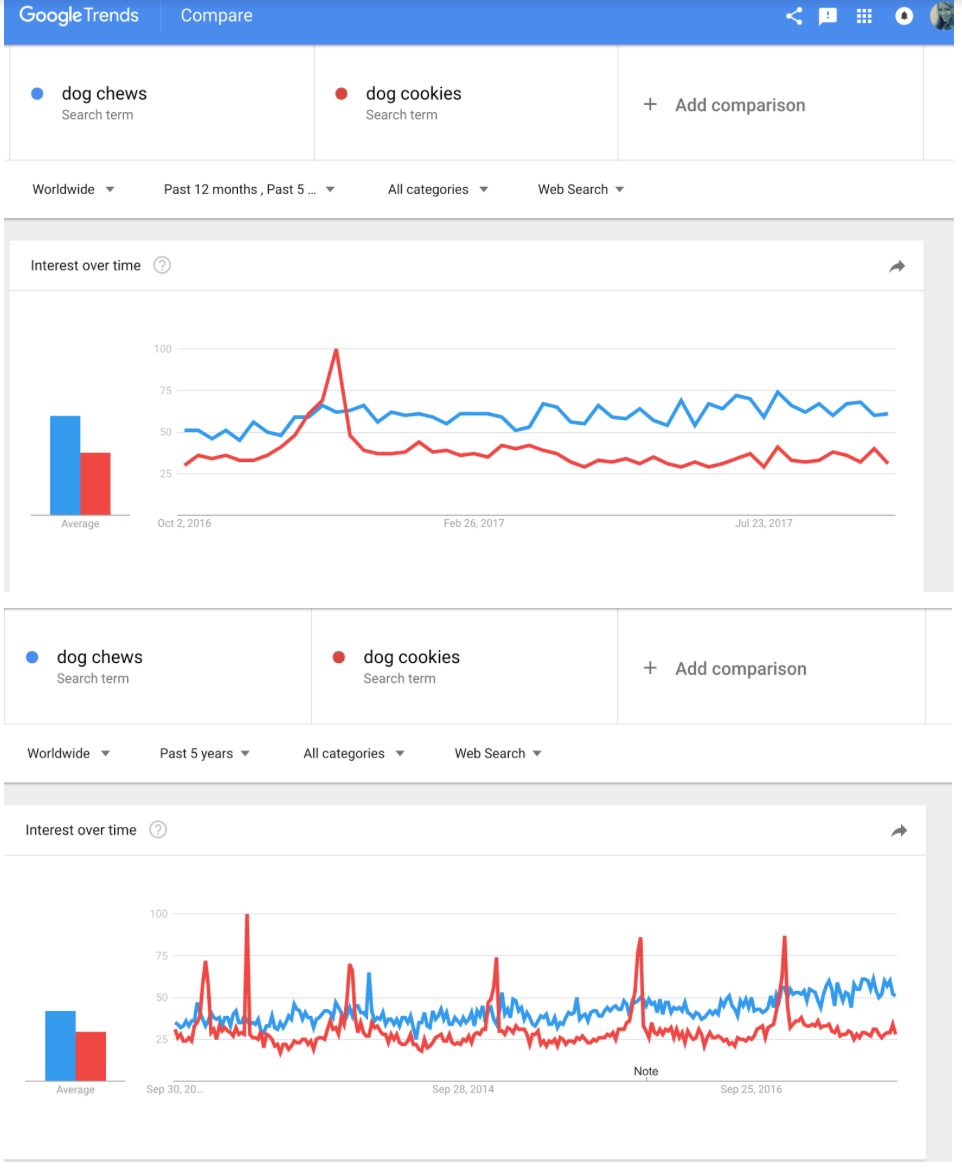Google Trends is one of many exciting tools Google offers to help people navigate how people are using the search engine to find information online.. It is particularly useful because it gives a high level view into search behavior across regions and languages. Google Trends is essentially a record of web queries relative to the total search volume over a given set of languages and regions.
It gives you the ability to mark emerging and diminishing trends to identify areas of growth and opportunity.
Today, we’ll show you how to leverage Google Trends to find actionable insights to help you grow your business.
Step #1: Identify Your Core Keywords
The most important step in the process is identifying your core keywords. You may already have an exhaustive list of your most important keywords, but it may be good to take some time to review the data associated with those keywords utilizing Google Keyword Planner or another keyword analysis tool. (We like MOZ’s Rank Tracker and SEMRush.) It’s important that you distill your keywords into the most salient topics related to your business

Step #2: Refine the Search by Region, Language, Category, and Date Range
It’s important to make sure you are using the correct region and language. Targeting based on these criteria will give you more accurate results. You can also sort the searches by category and date range. It’s often helpful to look at a series of date ranges so that you can see how the trends have changed over time and then look at a more granular view of the trend over a shorter period of time.

3. Review Your Results
This is the fun part. Take a look at your results to see if there are any actionable insights you can glean from them. It’s usually helpful to look at a number of different search criteria, and you can compare similar topics so that you can see which are trending in comparison to other relevant search queries. Sometimes you will stumble upon an emerging trend, and from there, you can identify a number of content topics to write on that your audience will be interested in.
Let’s go through a sample experiment. Jack owns a store that sells dog treats. He’s trying to decide how best to market his product line. Looking at Google Trends can help him determine which terms are going to be most effective in helping him to reach his audience. We can now take our keyword research and run through a few trend comparisons.

Jack sells healthy, natural, organic dog treats. Which descriptors should he focus on most? We can find out the answer to which topics are trending on Google through evaluating trends for the past 12 months and the last 5 years for relevant keywords. First, let’s compare “healthy dog treats” and “natural dog treats.” Over the past year, we can see the two terms run neck and neck in trends, but recently natural dog treats have seemed to pull ahead. Now let’s look at the last 5 years.
We can see that the trends for healthy dog treats seemed to top out in March of 2016 and have fallen from there. Whereas the term natural dog treats has kept a pretty consistent rise over the last 5 years. Now let’s look at the difference between a couple of different keywords.

Let’s compare dog chews and dog cookies. Jack sells both, and he wants to know which he should favor with his marketing. We can see based on Google Trends that dog chews are quite a bit more popular as a search term than dog cookies. Looking at the trend over the last 12 months, we can see that dog cookies are still pulling up a little bit in the trend whereas dog cookies are dropping a little. Looking at the 5 year chart, we can see that the gap has consistently widened between these two keywords over time.

Lastly, let’s compare the keywords “organic dog treats” and “natural dog treats.” We can see that natural dog treats are trending upward on a similar trend to organic dog treats. It’s clear that natural dog treats is more popular, but they are both following a similar upward trend.

A couple of other great tools to consider using when you are creating a content strategy include Google Insights and Google Correlate. In future posts, we will cover what those tools do and how to use them.
Would you like someone to do all the heavy lifting for you? Contact Organically. We can put together a full keyword and content plan for your business to help you leverage digital marketing to grow your business.
By Lauren Wilkison






 CERTIFIED EXPERT
CERTIFIED EXPERT